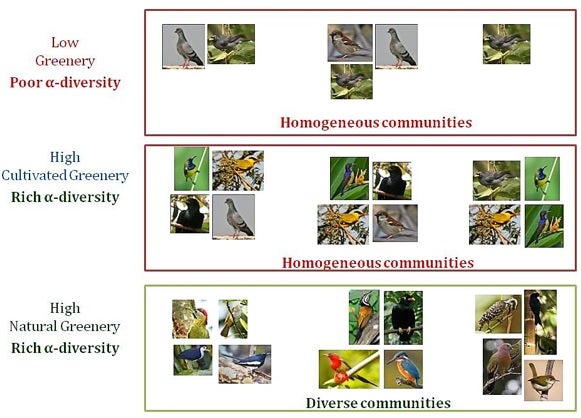Cultivated versus natural greenery
Hugh TAN (Group Leader, Biological Sciences) () August 23, 201423 Aug 2014. Having more urban trees appears to buffer the impacts of roads, but it can only support a limited suite of bird and butterfly species compared to natural forests.
A team led by Professor Hugh TAN from the Department of Biological Sciences in NUS found that “managed” greenery, i.e., typical horticultural landscaping consisting of manicured lawns, shrubs, and trees, are not able to support a diversity of bird and butterfly communities as compared to natural greenery, i.e., forests and grassland, in Singapore’s urban areas. This is despite the fact that these patches of natural greenery are usually tiny and highly degraded relative to, for example, forests found in the nature reserves. It was also discovered that the density of road lanes had strong adverse effects on bird and butterfly diversity.
As cities around the world begin to understand their potential in supporting nature conservation and re-equipping urban denizens with ecological literacy, this research cautions against replacing natural greenery within cities with manicured greenery that would result in “homogenized” urban wildlife. As urban areas expand and become denser, greenery planning will need to improve by having a more refined, hypothesis-testing approach, forming robust quantitative models to measure trade-offs, and incorporating interactions with other urban structures such as roads.

Image shows that high levels of cultivated greenery can result in high counts of bird and butterfly species numbers, but these communities are likely to be “homogeneous”, i.e., similar from place to place compared to those of natural greenery. (Picture credit: Wikipedia [for bird pictures only])
Reference
Chong KY, Teo S, Kurukulasuriya B, Chung YF, Rajathurai S, Tan HTW. “Not all green is as good: Different effects of the natural and cultivated components of urban vegetation on bird and butterfly diversity.” Biological Conservation. 171 (2014) 299.


